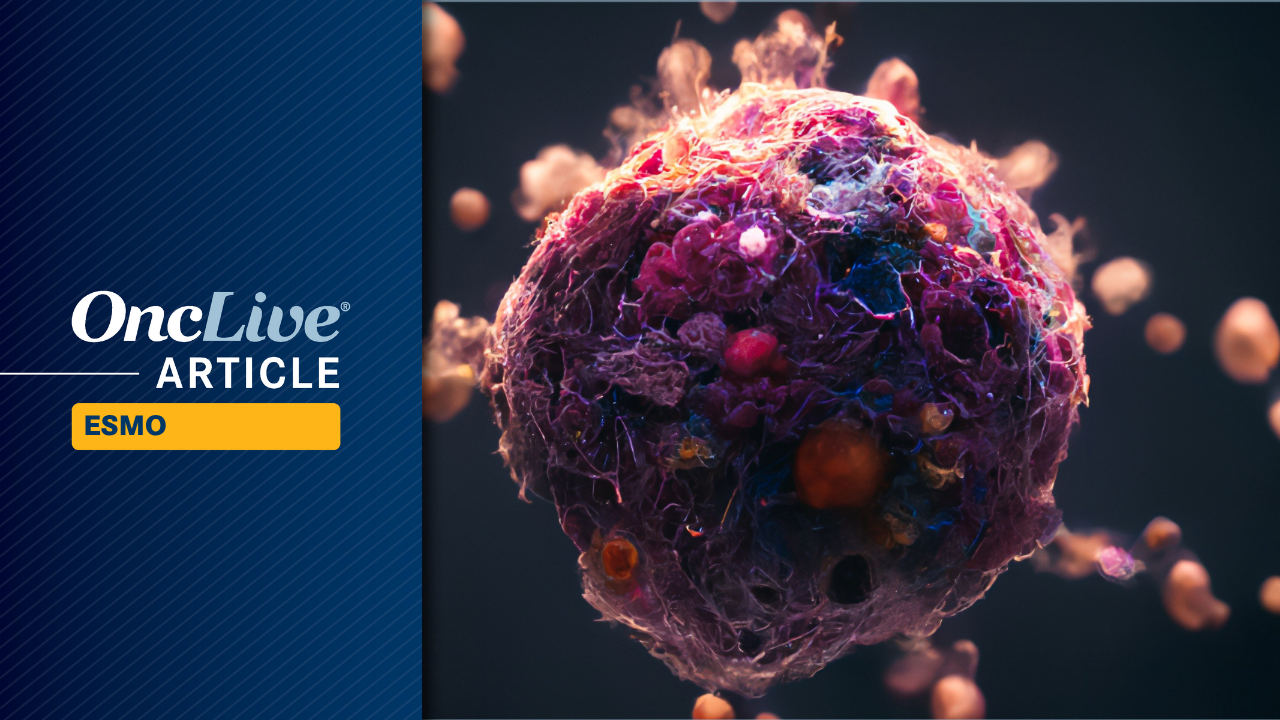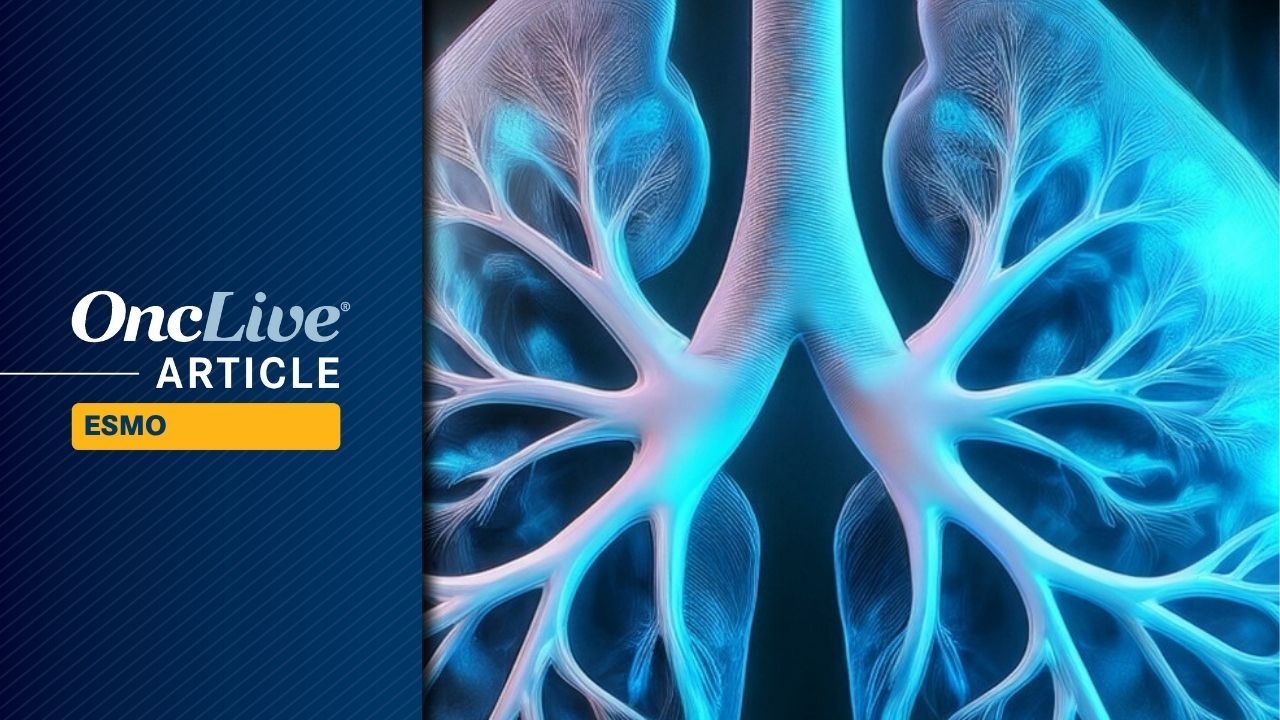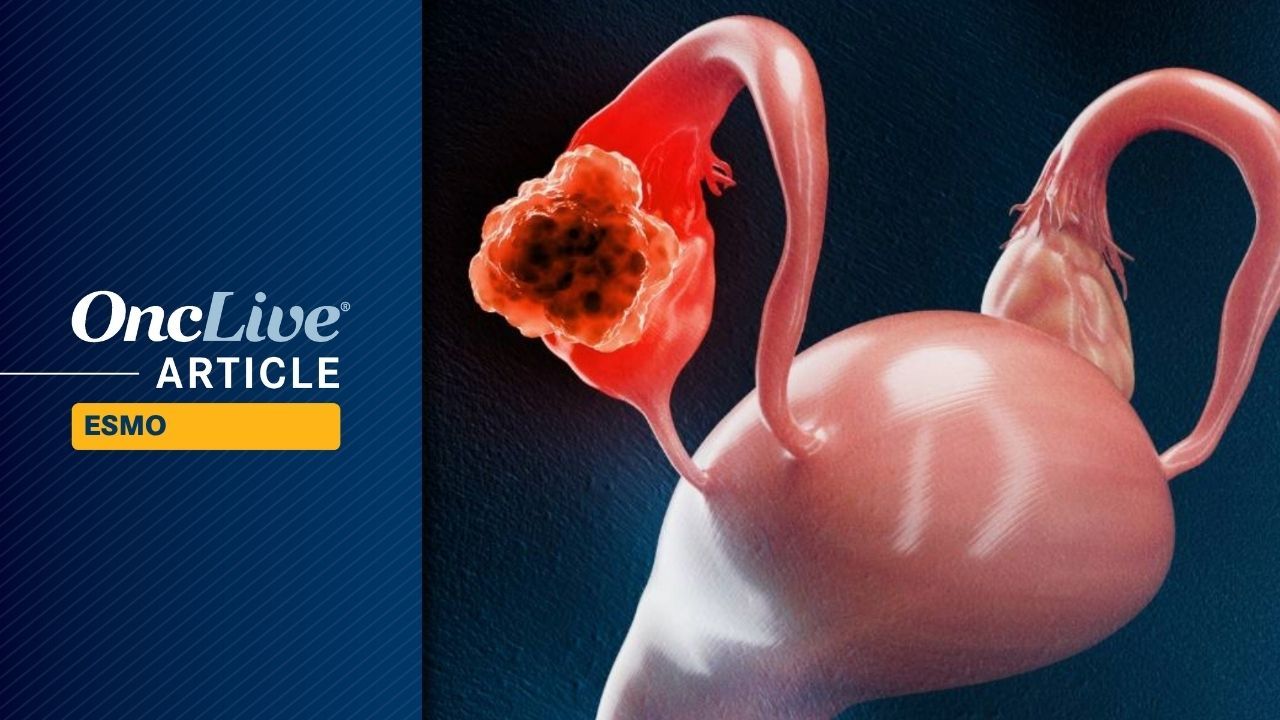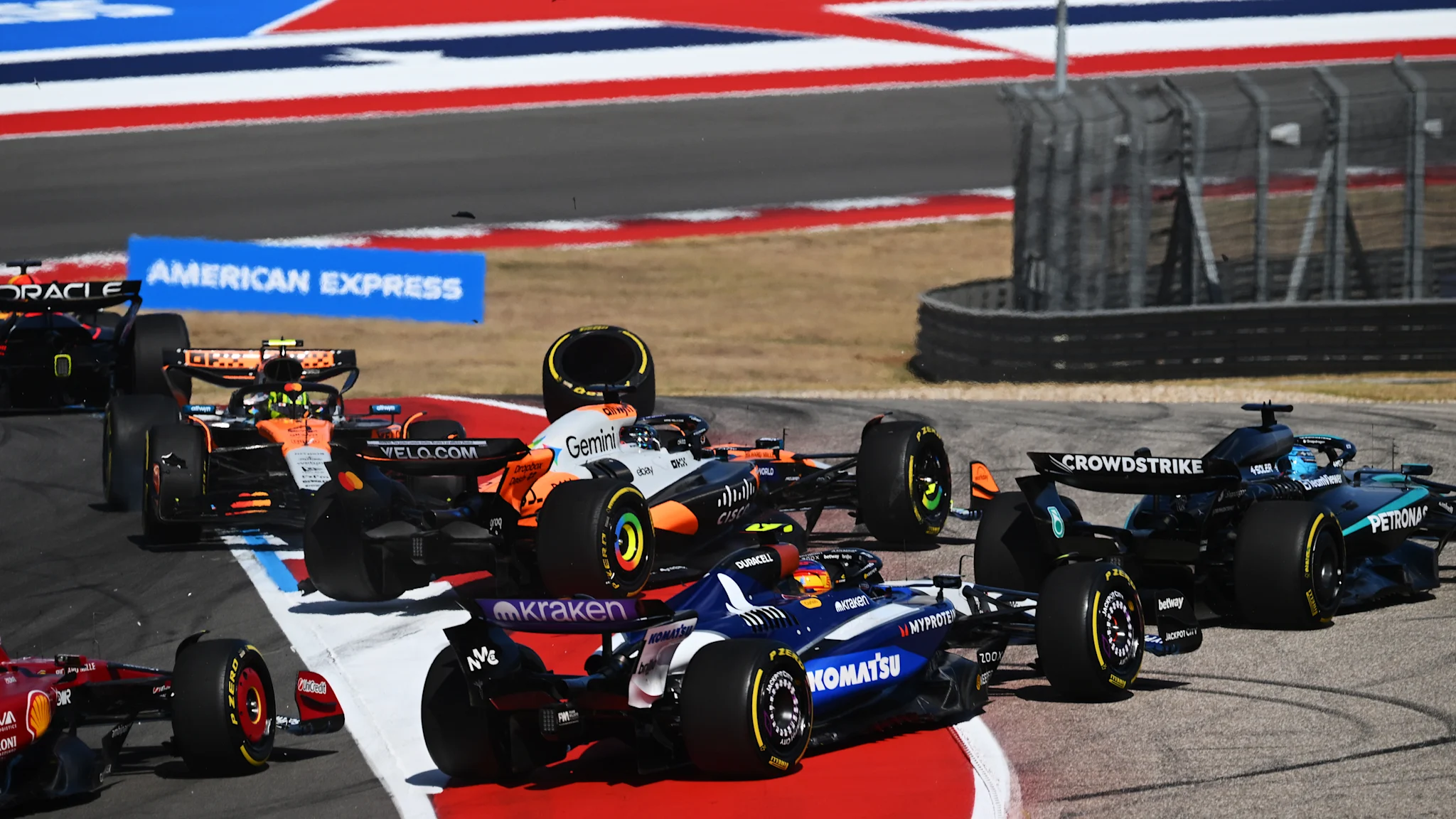What to know about the anti-Trump No Kings protests
Rachel Leingang
Millions are expected to show out for protests on Saturday at more than 2,500 locations across America, from small towns to large cities, to speak against the Trump administration.

Rachel Leingang
Millions are expected to show out for protests on Saturday at more than 2,500 locations across America, from small towns to large cities, to speak against the Trump administration.

Invikafusp alfa led to tumor regression in target lesions in 52% of patients with tumor mutational burden–high (TMB-H) or microsatellite instability–high (MSI-H) solid tumors resistant to immune checkpoint blockade, according to data from the phase 2 START-001 trial (NCT05592626) presented at the
Across the 4 biomarker-enriched populations with TMB-H tumors, TMB-H gastrointestinal cancers, TMB-H metastatic colorectal cancer (mCRC), and MSI-H tumors, the objective response rates (ORRs) were 20.5% (n = 9 of 44), 27.8% (n = 5 of 18), 33.3% (n = 3 of 9), and 30% (n = 3 of 10), respectively. The respective disease control rates were 79.5% (n = 35 of 44), 77.8% (n = 14 of 18), 66.7% (n = 6 of 9), and 70% (n = 7 of 10). Notably, the TMB-H cohort included patients with CRC, gastric, lung, breast, and other cancers.
“Invikafusp alfa, a first-in-class bispecific dual T-cell agonist, demonstrated clinically meaningful monotherapy activity in heavily pretreated immune checkpoint blockade–resistant/insensitive tumors harboring high tumor mutations,” presenting study author Antoine Italiano, MD, PhD, professor of medicine, head of Early Phase Trials Unit at the Institut Bergonié, and head of Precision Medicine at Gustave Roussy in France, stated in the presentation.
Immunotherapy resistance poses a clinical challenge as it limits the number of effective treatment options that are available to patients. Tumor-infiltrating lymphocyte therapies have shown promise in the immuno-oncology (IO)–refractory setting, with Vβ6/10 T-cell subsets representing the most common subset.
Invikafusp alfa was designed to selectively activate and expand Vβ10 T-cell subsets to overcome resistance to immune checkpoint blockade.
Eligibility criteria required that patients have unresectable, locally advanced or metastatic, TMB-H, MSI-H, or virally-associated solid tumors in phase 1, and TMB-H, MSI-H/mismatch repair–deficient (dMMR) tumors, including TMB-H and/or MSI-H CRC in phase 2.2 An ECOG performance status of 0 or 1 was required in both phases. Prior treatment with PD-(L)1 inhibition was allowed. In phase 2, patients with hepatic metastases were not permitted unless they had been treated and were stable.
Phase 1 followed a traditional dose-escalation design in which patients received either 0.01 mg/kg, 0.02 mg/kg, 0.04 mg/kg, 0.08 mg/kg, 0.12 mg/kg, or 0.16 mg/kg of invikafusp alfa.1 The dose expansion phase was broken into 3 cohorts: TMB-H (n = 56; cohort 1), MSI-H/dMMR (n = 29), and TMB-H and/or MSI-H/dMMR mCRC (n = 23 to 56). In phase 2, all patients received the recommended phase 2 dose (RP2D) of 0.08 mg/kg of the agent intravenously every 2 weeks.
The primary objective of phase 1 was to determine the RP2D and evaluate the safety and tolerability of the regimen. ORR per immune RECIST criteria served as the primary objective of phase 2.
As of July 9, 2025, 55 patients with TMB-H/MSI-H tumors had been enrolled in phase 2, adding to the 8 that had been enrolled in phase 1 at the optimal biologic dose. Represented tumor types (n = 63) included CRC (25.4%), non–small cell lung cancer (14.3%), head and neck squamous cell carcinoma (7.9%), gastric cancer (6.3%), breast cancer (4.8%), cutaneous cancer (4.8%), endometrial cancer (4.8%), melanoma (4.8%), anal cancer (3.2%), basal cell carcinoma (3.2%), gastroesophageal junction cancer (3.2%), pancreatic cancer (3.2%), bladder cancer (1.6%), cervical cancer (1.6%), duodenal adenocarcinoma (1.6%), esophageal cancer (1.6%), neuroendocrine carcinoma cells (1.6%), ovarian cancer (1.6%), prostate cancer (1.6%), thymic cancer (1.6%), and thyroid cancer (1.6%).
The median age was 61 (range, 53-69) and most patients were male (95.2%), White (63.5%), and had an ECOG performance status of 1 (52.8%). Most patients received between 1 and 3 prior lines of therapy (65.1%), prior treatment with an immune checkpoint inhibitor (67%), and had TMB-H disease (73.0%). Best response to prior immunotherapy was largely split between partial response (30.1%), stable disease (16.7%), progressive disease (26.2%), and unknown (26.2%).
Italiano noted that the safety profile was consistent with the agent’s mechanism of action. The most common treatment-related adverse effects (TRAEs) were cytokine release syndrome (grade 1, 22.2%; grade 2, 46.0%; grade 3, 12.7%), rash (grade 1, 11.1%; grade 2, 34.9%; grade 3, 7.9%), nausea (grade 1, 28.6%; grade 2, 20.6%; grade 3, 1.6%), pruritus (grade 1, 22.2%; grade 2, 20.6%; grade 3, 6.3%), vomiting (grade 1, 17.5%; grade 2, 31.7%; grade 3, 0%), alanine aminotransferase increase (grade 1, 22.2%; grade 2, 4.8%; grade 3, 9.5%), platelet count decrease (grade 1, 11.1%; grade 2, 12.7%; grade 3, 12.7%), chills (grade 1, 15.9%; grade 2, 11.1%; grade 3, 0%), diarrhea (grade 1, 19.0%; grade 2, 6.3%; grade 3, 1.6%), peripheral edema (grade 1, 9.5%; grade 2, 7.9%; grade 3, 0%), and increased blood bilirubin (grade 1, 7.9%; grade 2, 4.8%; grade 3, 3.2%).
“No step-up dosing and no immune checkpoint inhibitor–type immune-related adverse effects were reported. TRAEs were on target and well managed with supportive care, including corticosteroids such as tocilizumab (Actemra),” Italiano said.
“Selective activation of the T-cell Vβ repertoire represents a novel class of IO bispecific therapy, with broad potential as a next generation T-cell–targeted multi-specific antibody platform for the advancement of precision immunotherapy,” Italiano concluded.
Disclosures: No disclosures were presented for Italiano.

Google’s ‘Nano Banana’ image editing AI tool, celebrated for its ability to maintain likeness in AI-generated images, has been making quite waves. Following its successful integration into Google Search’s AI Mode and Google Lens, Google is…

[The following story contains spoilers from the first two episodes of The Diplomat season three.]
By the second episode of season three of Netflix‘s The Diplomat, viewers may have thought that the political thriller was on the verge of…

Yabna N’tchala is a Muay Thai black belt and Brazilian jiu-jitsu brown belt who has participated across all disciplines in combat sports. N’tchala is 12-2-1 with seven finishes, entering his PFL debut this past summer…

Equifax (EFX) has rolled out its new Ignite AI Advisor platform, which brings lender-focused analytics and generative AI capabilities to the forefront. This launch comes at a time of industry shifts, including changes to credit scoring access that could affect future revenue.
See our latest analysis for Equifax.
Despite Equifax’s ongoing push into AI-powered products for lenders, the company’s recent developments arrive amid shifting industry dynamics and competitive pressures. Over the past year, shareholders have faced a total return decline of nearly 19%, while the share price has fallen almost 10% year-to-date. This serves as a reminder that sentiment has faded even as management pursues new growth avenues. Meanwhile, three- and five-year total shareholder returns remain solidly positive, suggesting longer-term investors have still come out ahead.
If you’re interested in uncovering what else is gaining momentum beyond the headlines, this is a great time to expand your search and discover fast growing stocks with high insider ownership
Given recent innovations and ongoing industry disruptions, the key question for investors is whether Equifax’s current valuation still leaves room for upside, or if the market is already pricing in the company’s growth prospects.
Equifax’s most widely followed fair value narrative puts the company’s worth at $277.70 per share, notably above the last close price of $226.91. This suggests that, according to current consensus, the market is not yet pricing in all the drivers that underpin the long-term outlook.
“Accelerating customer adoption of new multi-data product solutions (e.g., TWN indicator, Single Data Fabric, EFX.AI) and continued high NPI (New Product Introduction) rates are expanding Equifax’s value proposition and positioning the company to capture incremental market share and drive sustained organic revenue growth above historical levels. Structural expansion of government verification requirements (e.g., semiannual redeterminations, added work requirements, improper payment focus) and a rising TAM for eligibility verification services are set to benefit long-term revenue growth and reduce business cyclicality as Equifax’s solutions become more critical to federal and state programs.”
Read the complete narrative.
Curious what’s behind that premium price? The secret sauce is in the projected pace of revenue expansion, ambitious margin targets, and a future earnings multiple seldom seen in the industry. Want to see which bullish financial levers drive this fair value? Click through for the complete playbook; your next big insight could be one number away.

Tarlatamab-dlle (Imdelltra) demonstrated a significant overall survival (OS) advantage over standard chemotherapy in patients with small cell lung cancer (SCLC), irrespective of chemotherapy-free interval (CFI) duration or prior anti–PD-(L)1 therapy, according to results from the phase 3 DeLLphi-304 trial (NCT05740566) presented at the
The median OS was 10.9 months in the tarlatamab arm vs 6.4 months in the chemotherapy arm among patients with a CFI of less than 90 days (HR, 0.60; 95% CI, 0.43-0.84). The 12-month OS rates in this population were 40% vs 24% with tarlatamab and chemotherapy, respectively.
Among patients with a CFI of 90 days or longer, the median OS was 17.1 months compared with 10.6 months in each arm, with respective 12-month OS rates of 64% and 48% (HR, 0.65; 95% CI, 0.45-0.93). Regarding patients with disease progression within 2 weeks of their most recent platinum-containing treatment, the Kaplan-Meier estimated 6-month OS rates were 55% with tarlatamab and 35% with chemotherapy.
Among patients with prior receipt of anti–PD-(L)1 agents, the median OS was 14.1 months in the tarlatamab arm and 8.3 months in the chemotherapy arm; the respective 12-month OS rates were 53% vs 36% (HR, 0.61; 95% CI, 0.45-0.82). In the group of patients without prior anti–PD-(L)1 therapy, the median OS was 13.6 months vs 8.3 months, and the 12-month OS rates were 53% vs 40% (HR, 0.65; 95% CI, 0.42-1.03). Overall, data showed that prior exposure to anti–PD-(L)1 agents did not affect OS benefits with tarlatamab vs chemotherapy.
“In the second line, standard chemotherapies have demonstrated modest survival benefits, especially [in] those patients with platinum-resistant disease, [who] often have a poor prognosis. DeLLphi-304 is the first randomized phase 3 trial to demonstrate superior OS with tarlatamab compared with standard chemotherapy. Importantly, this survival benefit extended to patients with platinum-resistant disease,” presenting author Pedro F. Simoes da Rocha, MD, PhD, of Vall d’Hebron University Hospital and Vall d’Hebron Institute of Oncology in Barcelona, Spain, stated in the presentation.1 “These findings reinforce the use of tarlatamab as a standard of care in second-line SCLC, including those patients with worse prognosis, such as [those] with platinum-resistant disease.”
In the randomized DeLLphi-304 trial, 509 patients were assigned 1:1 to receive tarlatamab (n = 254) or investigator’s choice of chemotherapy (n = 255), which included options of topotecan (n = 185), lurbinectedin (Zepzelca; n = 47), and amrubicin (n = 23). Investigators stratified patients by prior receipt of anti–PD-(L)1 agents, CFI interval, presence of brain metastases, and intended chemotherapy.
The trial’s primary end point was OS. Secondary end points included progression-free survival, patient-reported outcomes, objective response rate, and safety.
Patients with histologically or cytologically confirmed SCLC, disease progression following frontline platinum-based chemotherapy with or without anti–PD-(L)1 therapy, and an ECOG performance status of 0 or 1 were eligible for enrollment on the trial. Those with asymptomatic, treated, or untreated brain metastases were able to enroll.
In the tarlatamab and chemotherapy arms, respectively, 43% and 45% of patients had a CFI of less than 90 days, and 57% and 55% had a CFI of 90 days or longer. Additionally, 71% of patients in both arms had prior receipt of anti–PD-(L)1 therapy, while 29% from both arms did not. Investigators noted that subgroup baseline characteristics appeared to be balanced between treatment arms.
Across the different CFI and anti–PD-(L)1 subgroups, rates of grade 3 or higher treatment-related adverse effects (AEs) ranged from 24% to 30% in the tarlatamab arm and 58% to 69% in the chemotherapy arm. Any-grade events of cytokine release syndrome (CRS) occurred in 51% to 59% of patients who received tarlatamab across various subgroups, and subgroup status did not impact the risk of CRS.
Previously, the

The combination of pembrolizumab (Keytruda) plus weekly paclitaxel with or without bevacizumab (Avastin) generated a statistically significant progression-free survival (PFS) benefit vs placebo plus paclitaxel with or without bevacizumab regardless of PD-L1 status, as well as an overall survival (OS) benefit, in patients with recurrent, PD-L1–expressing platinum-resistant ovarian cancer (PROC), according to data from the phase 3 ENGOT-ov65/KEYNOTE-B96 trial (NCT05116189) presented at the
The analysis was broken down between the population of patients with a combined positive score (CPS) of 1 or higher and the intention-to-treat population. Furthermore, data were broken down between interim analysis 1 (IA1), which had a data cutoff date of April 3, 2024, and interim analysis 2 (IA2), which had a data cutoff date of May 5, 2025.
At IA1, the median PFS was 8.3 months (95% CI, 7.0-9.4) in the pembrolizumab arm compared with 7.2 months (95% CI, 6.2-8.1) in the placebo arm, with 12-month PFS rates of 35.2% (95% CI, 28.8%-41.7%) vs 22.6% (95% CI, 17.0%-28.7%), respectively (HR, 0.72; 95% CI, 0.58-0.89; P = .0014).
At IA2, the median PFS was 8.3 months in the pembrolizumab arm compared with 7.2 months in the placebo arm (HR, 0.75; 95% CI, 0.61-0.91); the 12-month PFS rates were 35.9% vs 23.9%, respectively, and the 18-month rates were 18.7% vs 10.5%.
The median OS was 18.2 months (95% CI, 15.3-21.0) in the pembrolizumab arm compared with 14.0 months (95% CI, 12.5-16.1) in the placebo arm, with 12-month OS rates of 69.1% vs 59.3%, and 18-month OS rates of 51.5% vs 38.9%, respectively (HR, 0.76; 95% CI, 0.61-0.94; P = .0053).
The objective response rate (ORR) was 53.0% (95% CI, 45.8%-60.0%), with a complete response (CR) rate of 9.9% and a partial response (PR) rate of 43.1%, in the pembrolizumab arm; in the placebo arm, the ORR was 46.6% (95% CI, 39.6%-53.7%), with a CR rate of 7.8% and a PR rate of 38.7%. The 12- and 18-month duration of response (DOR) rates in the pembrolizumab arm were 46.7% and 28.4% compared with 29.6% and 16.4% in the placebo arm.
At IA1, the median PFS was 8.3 months (95% CI, 7.2-8.6) with pembrolizumab compared with 6.4 months (95% CI, 6.2-8.1) with placebo, with 12-month PFS rates of 33.1% (95% CI, 27.7%-38.5%) and 21.3% (95% CI, 16.6%-26.4%), respectively (HR, 0.70; 95% CI, 0.58-0.84; P <.0001).
At IA2, the median PFS was 8.3 months vs 6.4 months, respectively (HR, 0.73; 95% CI, 0.62-0.86); the 12-month PFS rates were 33.7% vs 22.5%, and the 18-month PFS rates were 17.3% vs 9.0%.
The ORR was 50.4% (95% CI, 44.3%-56.4%), with a CR rate of 8.3% and a PR rate of 42.0%, in the pembrolizumab arm; in the placebo arm, the ORR was 40.8% (95% CI, 35.0%-46.8%), with a CR rate of 6.0% and a PR rate of 34.8%.Furthermore, the 12- and 18-month DOR rates in the pembrolizumab arm were 46.6% and 26.5% compared with 28.4% and 14.5% in the placebo arm.
“These data support the use of pembrolizumab plus weekly paclitaxel, with or without bevacizumab, as a new standard of care for patients with [recurrent] PROC,” presenting author Nicoletta Colombo, MD, PhD, of the Gynecologic Oncology Program at the European Institute of Oncology, IRCCS, in Milan, Italy, and the Department of Medicine and Surgery at the University of Milan-Bicocca in Italy, wrote with coauthors in the presentation.
Any-grade treatment-related adverse events (TRAEs) occurred in 97.8% of the pembrolizumab arm and 95.3% of the placebo arm; grade 3 or higher TRAEs occurred in 67.5% and 55.3%, respectively. TRAEs were serious in 33.1% and 19.5%, led to death in 0.9% and 1.6%, and led to discontinuation of any treatment in 35.9% and 28.0%.
Any-grade immune-mediated AEs occurred in 39.1% and 18.9%, and grade 3 or higher events occurred in 11.6% and 3.5%. They were serious events in 10.9% and 2.2%, and led to treatment discontinuation in 6.9% and 2.5%.
The most common TRAEs in both groups included anemia (49.7% vs 42.1%, respectively), peripheral neuropathy (38.8% vs 31.1%), alopecia (37.8% vs 34.0%), fatigue (35.3% vs 33.0%), and nausea (31.3% vs 27.4%). The most common immune-mediated AEs were hypothyroidism (17.8% vs 6.0%), infusion reactions (5.9% vs 4.7%), and hyperthyroidism (5.0% vs 0.6%).
A total of 643 patients with histologically confirmed epithelial ovarian, fallopian tube, or primary peritoneal carcinoma were enrolled in the trial and randomly assigned to either the pembrolizumab arm (n = 322) or the placebo arm (n = 321). Treatment was either pembrolizumab at 400 mg once every 6 weeks for 18 cycles or placebo on the same schedule; all patients received paclitaxel at 80 mg/m2 on days 1, 8, and 15 of each 3-week-long cycle, and they either did or did not receive bevacizumab at 10 mg/kg every 2 weeks.
Patients were enrolled in the trial if they had received 1 or 2 prior lines of therapy with at least 1 platinum-based chemotherapy; prior anti-PD-1 or anti-PD-L1 agents, PARP inhibitors, and bevacizumab were permitted. Additionally, patients had radiographic progression within 6 months after the last dose of platinum-based chemotherapy and an ECOG performance status of 0 or 1.
The primary end point of the trial was PFS per RECIST v1.1 by investigator assessment, and a key secondary end point was OS.
The median age of patients was 62 years vs 61 years in the pembrolizumab vs placebo arm, 64.3% and 67.6% of patients were White, 41.3% and 41.1% had a PD-L1 CPS from 1 to less than 10, and 31.4% and 31.2% had a PD-L1 CPS of at least 10.
Colombo N, Zsiros E, Sebastianelli A, et al. Pembrolizumab vs placebo plus weekly paclitaxel ± bevacizumab in platinum-resistant recurrent ovarian cancer: Results from the randomized double-blind phase 3 ENGOT-ov65/KEYNOTE-B96 study. Presented at: European Society of Medical Oncology Congress 2025; October 17–20, 2025; Berlin, Germany. Abstract LBA3.

Max Verstappen took his third consecutive Sprint victory at the Circuit of The Americas after title rivals Lando Norris and Oscar Piastri retired in an opening lap collision involving Sauber’s Nico Hulkenberg.
Verstappen converted Sprint pole…